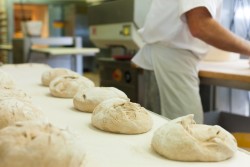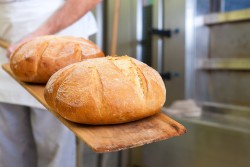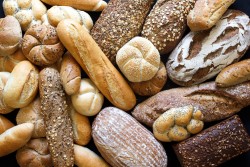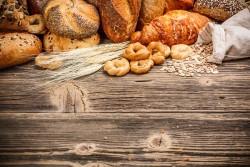Over ons
Onze bakkers verzorgen dagelijks een grote sortering van verse producten.
Original Title: Introduction to Application of Distillation Technology in Chemical Plant Introduction: In the production of pharmacy and fine chemical industry, there are often many liquid phase or vapor phase mixtures that need to be separated or purified. Distillation technology has become the most widely used and largest mass transfer separation process. Today, I will tell you about the types of distillation and illustrate the process flow in actual production. Distillation technology is a process in which the mixture is separated by multiple partial vaporization and multiple partial condensation under a certain pressure, so as to obtain the part close to the pure state. The distillation process in industrial production is a process in which the partial gasification process and the partial condensation process are organically combined in the distillation column. The distillation operation is divided into continuous operation and batch operation, and the equipment used is similar. It mainly comprises a rectifying tower, a condenser and a reboiler. The column equipment used for rectification includes plate column and packed column, and the plate column is commonly used. Classification of distillation technology and examples of process flow in actual production: Expand the full text Additive rectification The rectification method achieves the separation effect by adding a certain component (called entrainer) to form an azeotrope with one or more components in the separated system or destroy the azeotrope that may exist between the components of the original material, which can be divided into extractive rectification, azeotropic rectification and salt-adding rectification. Azeotropic distillation Azeotropic distillation is a process of separation by using the property that substances in a mixture can form azeotropes. Azeotropic distillation is the distillation of multicomponent (at least three components) non-ideal solutions. According to whether the azeotrope can be separated into two immiscible liquid phases, it can be divided into homogeneous azeotropic distillation and heterogeneous azeotropic distillation. Process with heterogeneous azeotrope as overhead product Adding ethanol-water azeotropic mixture and entrainer benzene into tower a to obtain pure ethanol at the bottom of the tower. A ternary azeotropic mixture of water, ethanol and benzene is obtained at the top of the tower and enters a phase separator after being condensed to form two liquid layers in the phase separator, wherein the upper layer is rich in benzene and the lower layer is rich in ethanol. The benzene-rich layer flows back to the tower a to supplement entrainer, the ethanol-rich layer enters the tower B, the benzene-ethanol azeotrope is obtained at the top of the tower to recover benzene, and the mixture of ethanol and water obtained at the bottom of the tower enters the tower C. The top of tower C is ethanol-water azeotrope, and the bottom of tower C is pure water. Through this process, the separation of ethanol and water can be completed. Process in which the product at the top of the column is a homogeneous azeotrope This kind of azeotropic distillation process is more complex. Figure 1.9 shows a process for the separation of toluene from alkanes near boiling points using methanol as an entrainer. The product (methanol-alkane azeotrope) at the top of the tower a is not layered after condensation, and the recovery of the entrainer cannot use a simple layering method, and the product at the top of the tower a needs to be introduced into the extraction tower B, and water is added from the top to extract toluene. The light-phase alkane is obtained from the top of the extraction tower, and the methanol-water solution from the bottom can be separated into methanol and water in a common rectification tower. The product at the bottom of tower a enters into tower D, toluene is obtained at the bottom of tower D, and the product at the top of tower a is partially refluxed and partially returned to tower a for further use. Extractive distillation Extractive distillation is a process in which an extractant (a third component) is added to the component to be separated to significantly change the relative volatility of the component to be separated. In the benzene refining process, the benzene product after coking pretreatment is introduced into the stage of removing alkane and olefin by extractive distillation, as shown in Figure 2-2: the pretreated raw material is added into the middle part of the extractive distillation tower, the extractant is added from the top of the extractive distillation tower, and the saturated solvent (mainly including extractant, benzene and thiophene) is discharged from the bottom of the tower. A raffinate (a mixture containing more impurities) is withdrawn from the top of the column. Then the saturated solvent is sent to a solvent recovery tower for solvent recovery, and the recovered solvent is sent to the top of an extraction tower and a rectification tower for recycling. Salted extractive distillation Salt-adding extractive distillation is a separation process that uses solid salt as extractant or adds solid salt to extractant to improve the separation performance of extractant. The feed (methanol-toluene azeotrope) enters from the bottom of the extraction tower (T1) after being mixed with the near-boiling mixture of methanol and toluene distilled from the top of the toluene recovery tower (T2), The salt-added extractant returned from the bottom of the methanol recovery tower (T3) is cooled to 35 ℃ by the cooler (E5) and then enters the top of the T1 tower to complete countercurrent extraction in the T1 tower. The raffinate phase at the top of the T1 tower enters the toluene recovery tower (T2), the qualified toluene product is obtained at the bottom of the tower, and the material at the top of the tower returns to the bottom of the T1 tower. The extract phase at the bottom of tower T1 enters the methanol recovery tower (T3), and the qualified methanol product is obtained at the top of the tower. The saline at the bottom of the tower returns to the top of tower T1 after cooling. Composite (or coupled) distillation Compound distillation is to couple various distillation forms to achieve the purpose of strengthening the mass transfer process and simplifying the process. Typical examples include reactive distillation, adsorptive distillation, crystallization distillation, and membrane distillation. Reactive distillation Reactive distillation is a coupling process in which the reaction process and distillation separation are organically combined in the same equipment. Reactive distillation is only applicable to the process in which chemical reaction and distillation are carried out in the same temperature and pressure range. A typical liquid phase reversible reaction a + B BC + D at normal temperature and pressure is taken as an example to introduce the process flow of reactive distillation. The order of volatility of a, B, C and D is C, a, B and D, and the target product is D. It can be seen from Figure (B) that by using the reactive distillation technology, the raw materials A and B enter the reactive distillation column from the lower and upper parts of the reaction section respectively, and fully contact and react in the reaction section, so that the target product and reactant are separated in time. Adsorption distillation Adsorptive distillation is a new type of intensified distillation process, which combines the advantages of high separation factor, high product purity and low energy consumption with the advantages of continuous production and large processing capacity of distillation. Process flow diagram 1-6 shows the process of adsorption distillation separation of tert-butyl alcohol-water azeotrope by using the slurry composed of ethylene glycol as carrier liquid and 4A molecular sieve as adsorbent. The dilute tert-butyl alcohol aqueous solution is continuously input to the lower part of the adsorption distillation tower, and simultaneously a certain amount of slurry formed by the ethylene glycol and the 4A molecular sieve is continuously input from the upper part of the adsorption distillation tower. Because the boiling point of ethylene glycol is higher than that of water, and the boiling point of water is higher than that of tert-butyl alcohol, in the adsorption distillation tower, the tert-butyl alcohol is enriched to the top of the tower due to distillation and adsorption of 4A molecular sieve, and at the same time, the slurry formed by water, ethylene glycol and 4A molecular sieve flows to the bottom of the tower at the same time, part of water remains in the carrier liquid, and the other part is adsorbed by 4A molecular sieve. The tower bottom liquid of the adsorption distillation tower is then sent to the distillation desorption tower. Due to the distillation effect and the desorption effect of the 4A molecular sieve, water is enriched at the top of the distillation desorption tower. At the same time, the water in the 4A molecular sieve is desorbed. The slurry composed of the glycol carrier liquid and 4A molecular sieve flows to the tower bottom and finally flows back to the adsorption distillation tower for further use. Crystallization and rectification Crystallization and distillation is a process that combines crystallization and distillation, which can not only obtain high-purity products, but also strengthen the distillation process. The crystallization rectification is used for separating isomers of MDI, and the MDI has three isomers of 2,4 '-MDI4,4' -MDI and 2,2 '-MDI, wherein, molecular distillation systems ,nutsche filter dryer, the MDI-100 refers to the MDI containing 4,4' -MDI with the purity of more than 99%, and the MDI-50 refers to 2,4 '-MDI and 4, 4 '-MDI. In that proces, the material firstly enters a melting crystallize, and the crystallizer adopts a suspension crystallization mode to partially crystallize the 4, 4 '-MDI. After separation, the crystal is washed for many times to be the MDI-100 product, and the washing liquid is refluxed to the crystallizer for recrystallization. The mother liquor is heated and then enters a vacuum rectification device, and the reflux ratio and the extraction amount at the top of the tower are controlled, so that the mass fraction of 2, 4 '-MDI in a 2, 4' -MDI side-line extraction outlet is about 50%, and the 2, 4-MDI is used as an MDI-50 product. The 2, 4 '-MDI content in the 4, 4' -MDI side outlet is 10%, which is used as reflux to mix with the feed and then enter the crystallizer for recrystallization. Distillation under Unconventional Conditions Unconventional condition is a relative concept. Compared with the general distillation process, the distillation under unconventional conditions means that the operating parameters (such as operating temperature, pressure, etc.) are carried out under more extreme conditions, or the quality (purity) of the separation object or the obtained product is required to be very high. Molecular distillation Principle of molecular distillation: Different molecules have different effective molecular diameters, so their mean free paths are also different. Molecular distillation technology is based on the difference of mean free path of different substance molecules after they are heated and evaporated from the liquid surface to achieve separation and purification. The specific method comprises the following steps of: arranging a condensation surface above the liquid surface, wherein the condensation surface is larger than the mean free path of heavy molecules and smaller than the mean free path of light molecules, so that the heavy molecules cannot reach the condensation surface and return to the liquid surface to keep the original balance; and continuously condensing the light molecules on the condensation surfaces As a result, the dynamic balance of light molecules is destroyed, and the light molecules in the mixed liquid continuously escape from the liquid phase, and finally the purpose of separation is achieved. The specific process (see figure below). Vacuum rectification Vacuum distillation refers to the operation of distillation process under vacuum, which is often used for the separation and purification of high boiling point substances or heat-sensitive substances. Vacuum distillation process is widely used in the production of fine chemicals. The selenium residue containing impurities is distilled twice to finally obtain selenium with higher purity. SUNCHEM: It has been focusing on the R & D, production and sales of hydrogenation catalysts for 15 years, and is positioned to provide users with the most suitable special catalyst products, mainly serving the pharmaceutical, pesticide, dye, spice, chemical and other industries. Xunkai's special catalyst products have been applied to the hydrogenation, dehydrogenation, reductive amination, desulfurization and other processes in the fields of sorbitol, BDO, caprolactam, fatty alcohol, polyether amine, butanol and octanol, HPPO, petroleum resin hydrogenation, RT base, alcohol hydrofining and so on. Xunkai is striving to become the representative of high-end catalysts in China's chemical industry and the pioneer of replacing imported catalysts. Xunkai catalyst products include: RaneCAT series: Raney metal catalyst series, including Raney nickel, Raney copper and Raney cobalt, for nitro hydrogenation and nitrile hydrogenation. CuCAT series: Cu-Zn, Cu-Si, Cu-Al series catalysts, used in alcohol dehydrogenation, ester hydrogenation, aldehyde hydrogenation and other fields. PMCAT series: palladium, platinum, ruthenium supported on activated carbon or alumina catalysts, used in hydrogenation, dechlorination, deep desulfurization, fuel cell desulfurization and other fields. SNCAT series: powder supported nickel catalyst, fixed bed supported nickel catalyst, used in C5 resin hydrogenation, C9 resin hydrogenation, DCPD resin hydrogenation, rosin and its resin,rotary vacuum evaporator, PAO polyalphaolefin, oil hydrogenation and so on. The latest chemical consulting, please click to follow me! Information source of this article | Environmental Protection Chemical Platform Please contact us if there is any violation or infringement. Return to Sohu to see more Responsible Editor:. toptiontech.com

Ons broden assortiment is groot en veelzijdig, van vaste toppers tot verrassende seizoensprodukten, trendy noviteiten tot 'gouwe ouwe', veelal volgens authentieke recepten.

Onze banketbakkers bakken elke dag verse taarten, voor iedere gelegenheid. De lekkerste verjaardagstaart, de mooiste bruidstaart of geboortetaart.
maandag tot en met vrijdag 08:30-17:30 uur
zaterdag 08:00 - 17:00 uur
Adres: Haagweg 4F10, 2311 AA Leiden
Telefoonnummer: 071-3410161
E-mailadres: info@compra.nl
Mail ons gerust via dit formulier – we zullen zo snel mogelijk op uw bericht reageren.







